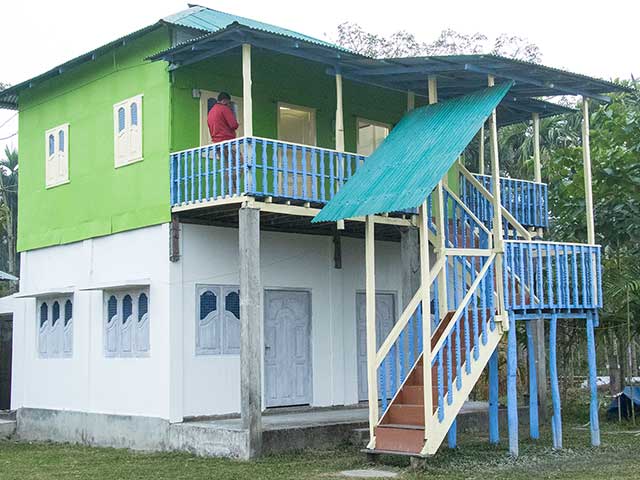About Chilapata
Homestays in Chilapata – Experience the Wild Heart of Dooars Up Close
Chilapata is one of those places in Dooars where the jungle is not just something you see from a distance—it’s something you live in. Spread between Jaldapara National Park on the west and Buxa Tiger Reserve on the east, Chilapata Forest is a dense, green world where every rustle in the leaves might be a deer, a peacock, or even an elephant. The Torsa River flows lazily nearby, and the air here carries the earthy scent of rain-soaked soil and wildflowers. For Bengali tourists looking for a raw yet comfortable wildlife experience, homestays in Chilapata offer the perfect balance.
The Experience of Staying in a Chilapata Homestay
When you stay in a Chilapata homestay, you are not just booking a room—you’re stepping into the daily life of the forest people. The region is home to Rava, Mech, Nepali, and Adivasi communities, each with their traditions, food, and way of living in harmony with the forest. Your mornings might start with the sound of hornbills calling from the treetops, followed by a hot cup of tea made with fresh milk from the family’s cows.
The rooms are generally simple but comfortable—clean bedding, mosquito nets, and enough space to relax. What makes the experience special is the warm hospitality. Your host might tell you about elephant movements in the area, guide you on a short walk to the riverbank, or serve you home-cooked meals prepared with fresh, local ingredients.
Why Choose a Homestay Over a Resort in Chilapata
Resorts can feel cut off from the real forest life, but a homestay puts you right in the middle of it all. You can step out of your room and see paddy fields merging into thick forest. Children in the village might wave at you on your way to a nature walk. In the evenings, you can sit under the stars listening to folk songs or stories about the forest from your hosts.
Most homestays are close to the main safari entry points, so arranging a jungle safari in Chilapata is easy. You can explore Nalraja Garh, an ancient fort hidden deep inside the forest, or go on a jeep ride looking for elephants, bison, leopards, and countless species of birds.
What to Expect in Terms of Food and Amenities
Food in Chilapata homestays is a highlight. Most families serve rice, dal, vegetables, and either chicken, fish, or egg curry, often with a distinct local flavour. In the morning, you might get roti with sabji, or puffed rice with tea. The food is usually cooked over a wood fire, which gives it a smoky, earthy taste.
Amenities are basic but adequate. You can expect clean bathrooms with running water, electricity (though there can be occasional power cuts), and a mobile network in most areas. Hot water is usually provided in buckets if there’s no geyser.
Best Time to Stay in a Chilapata Homestay
The best time to visit is October to April, when the weather is pleasant and the forest is accessible for safaris. Winters are especially magical—misty mornings, golden sunlight filtering through the trees, and animals coming out into the open. Monsoon months (June–September) see heavy rainfall and limited safari operations, but the forest is incredibly lush at that time.
How to Reach Chilapata
Chilapata is well-connected to the major towns of North Bengal. From Alipurduar Junction, it’s around 20 km (about 40 minutes by road). From Hasimara, it’s about 15 km, and from Cooch Behar, around 45 km. If you’re coming from Siliguri, the journey is about 3.5 to 4 hours by car.
Book Your Chilapata Homestay with Humro Home
If you’re planning a trip to the Dooars and want to experience authentic village life right next to the forest, book your Chilapata homestay through Humro Home. With us, you get verified accommodation, friendly local hosts, and a chance to explore the forest with insider knowledge.
Call now to book your stay: 9733071716 / 9733069690


